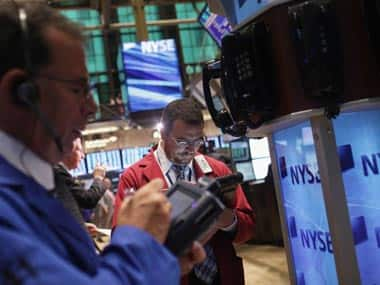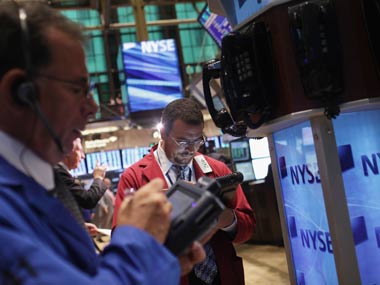New York: Disappointing US economic and corporate-earnings reports in recent weeks indicate that the world’s largest economy will follow an erratic growth path. This makes hopes that America was at last entering a phase of solid, self-sustaining growth a trifle premature.
Against a backdrop of a European recession and a slowdown in emerging economies like China and India, the world was counting on the US to carry the recovery. Only last week developing nations at the meeting of the Group of 20 finance ministers hailed the perceived US upturn, while warning that the Federal Reserve should be careful to avoid spooking markets if it ends its bond-buying program.
[caption id=“attachment_978195” align=“alignright” width=“380”]  Reuters[/caption]
But with second-quarter earnings season in full swing, one thing is becoming apparent: US corporate earnings growth is wobbly and revenue growth is weaker, and that’s a reflection of an economy that is slowing down.
Weaker-than-expected results on Monday from McDonald’s Corp, the world’s largest restaurant chain, kept the Dow in check after the company said full-year results would be “challenged” in the face of falling sales.
Google announced earnings last week and for the first time in a long time, those earnings did not beat expectations. For the quarter, EPS came in at $9.56 per share on revenues of $14.1 billion. Analysts had been looking for $10.80 and $14.4 billion respectively.
Worryingly, there are signs that free-spending US consumers, who helped prop up the economy for much of the past year, are beginning to tighten their belts. Retail sales grew a paltry 0.4 percent in June, showed US Commerce Department figures.
Impact Shorts
More ShortsBrisk sales at restaurants which contributed over 150,000 jobs over the past three months fell suddenly in June, suggesting consumers could be pulling back on discretionary spending.
Previously owned home sales also fell unexpectedly in June as tight supply and increasing rates for mortgages threatened the real-estate market recovery in the US. Goldman Sachs has cut its second quarter US gross domestic product (GDP) estimate again after home sales fell in June for the first time this year. The bank now forecasts 0.7 percent growth in the second quarter, revised down from 0.8 percent.
The Wall Street bank revises its GDP figures several times, but economists weren’t expecting such a slew of quick revisions. On July 10, Goldman cut its forecast from 1.6 percent to 1.3 percent on the back of an unexpected fall in wholesale inventories in May. Then on July 15, it revised down forecasts to 1.0 percent after disappointing retail sales, and now to 0.8 percent.
You can be sure that the Federal Reserve is watching all the data closely as it decides when to begin winding down its bond-buying program. On the back of better-than-expected jobs growth in June, 44 percent of economists in a Bloomberg survey said Fed chairman Ben Bernanke will cut what is currently the Fed’s $85 billion per month bond buying purchases by $20 billion at the September 17-18 policy meeting.
But in Senate testimony on Thursday, Bernanke said it was too early to make a decision and reiterated that the timeline will depend on how the economy performs in coming months, warning that the economy “remains vulnerable to unanticipated shocks.” After Bernanke’s two days of testimony on Capitol Hill, we still don’t know for sure where Fed policy, and the global markets that depend upon it, will go from here.


)

)
)
)
)
)
)
)
)



